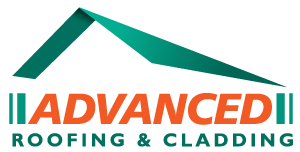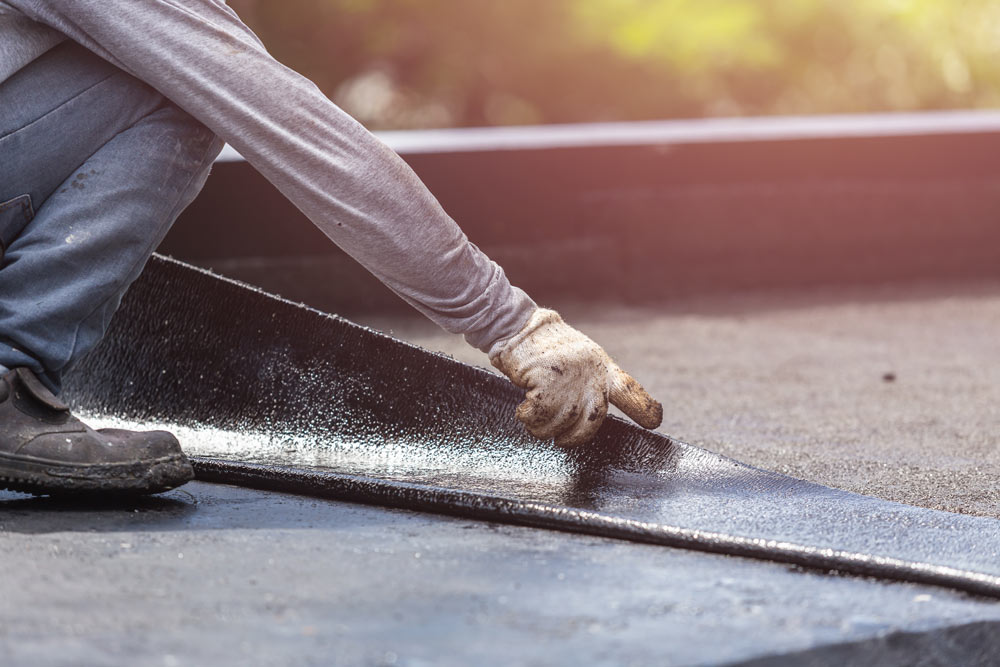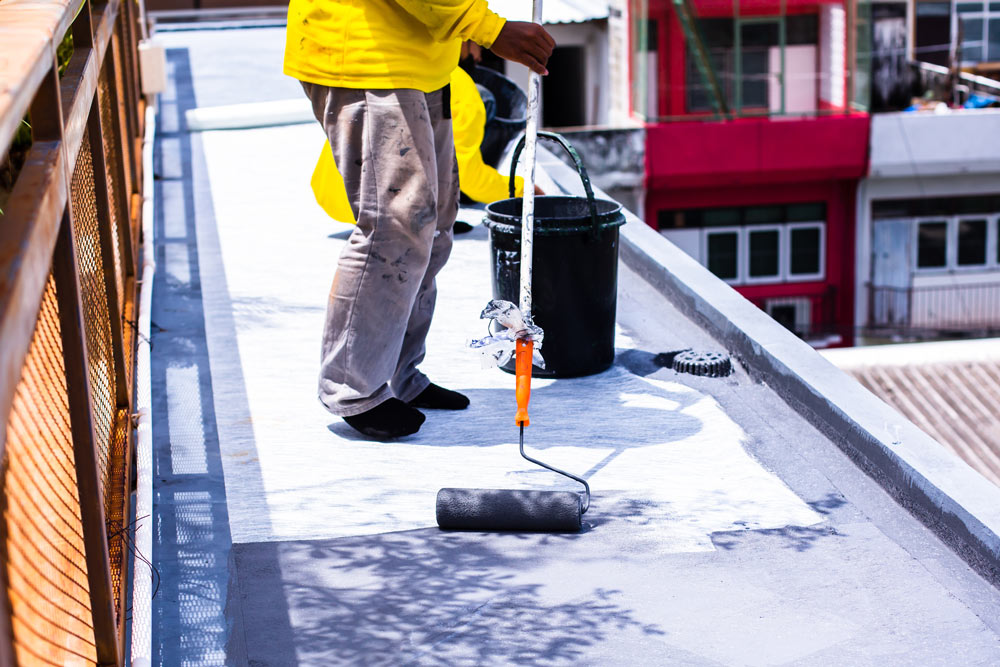When it comes to protecting your commercial property, few things are more important than the roof. A well-maintained, waterproof roof not only shields your building from the elements but also helps to prevent costly damage to the structure, equipment, and inventory. Choosing the right waterproofing method for your commercial roof is essential for ensuring long-term protection and minimising maintenance costs. However, with so many waterproofing options available, it can be challenging to know which solution is best for your building.
In this blog post, we will explore some of the most common waterproofing methods for commercial roofs, highlight their benefits, and provide guidance on how to select the right one based on your specific needs.
1. Understanding the Importance of Roof Waterproofing
Waterproofing is a critical aspect of commercial roofing. Without proper waterproofing, your roof is susceptible to water ingress, which can lead to leaks, structural damage, mould growth, and even compromised insulation. These issues can significantly impact the integrity of the building and lead to costly repairs and operational disruptions.
The primary goal of any waterproofing method is to create a barrier that prevents water from penetrating the roof surface, keeping the interior dry and secure. The right waterproofing system will not only protect your building from immediate water damage but will also extend the lifespan of the roof, reducing the need for frequent repairs or replacements.
2. Popular Waterproofing Methods for Commercial Roofs
There are several waterproofing methods commonly used in commercial roofing. The right choice depends on various factors such as the roof design, materials, environmental conditions, and budget. Here’s a breakdown of the most popular options:
a. Hot Melt Waterproofing
Overview: Hot melt waterproofing involves the application of a molten liquid membrane directly to the roof surface, forming a seamless, fully bonded waterproof layer. It is typically reinforced with a fabric layer and protected with insulation and ballast.
Benefits:
- Highly durable and long-lasting, often matching the lifespan of the building.
- Seamless application eliminates potential weak points for water ingress.
- Ideal for flat roofs and podium decks with heavy foot traffic.
- Suitable for use in a variety of climates, including areas with temperature fluctuations.
Best for: Flat roofs, podium decks, and heavy-duty commercial applications requiring long-lasting durability.
b. Cold Applied Liquid Waterproofing
Overview: Cold applied liquid waterproofing involves applying a liquid membrane that cures to form a flexible, seamless layer. It is a safe, flame-free solution that can be applied to a variety of roof substrates.
Benefits:
- Seamless application ensures comprehensive waterproofing coverage.
- Flexible and durable, able to accommodate building movement and temperature changes.
- Cold application eliminates fire risks associated with heat-based systems.
- Suitable for roofs with complex shapes, penetrations, and detailing.
Best for: Flat, pitched, or irregularly shaped roofs where safety and flexibility are paramount.
c. Felt Waterproofing
Overview: Felt waterproofing, also known as built-up roofing (BUR), involves layering sheets of felt or bitumen, often reinforced with layers of tar or gravel, to create a durable, waterproof barrier.
Benefits:
- Economical option for flat or low-slope roofs.
- Proven, long-established waterproofing method with decades of usage.
- Durable and resistant to foot traffic and weather conditions.
Best for: Flat roofs on commercial or industrial buildings looking for a budget-friendly option.
d. Single Ply Waterproofing
Overview: Single ply waterproofing involves applying a flexible membrane, usually made of synthetic materials like PVC, TPO, or EPDM, directly to the roof surface. This method is lightweight and installed in large sheets, reducing the number of seams.
Benefits:
- Lightweight, making it suitable for retrofits and roofs with weight constraints.
- Highly resistant to UV exposure and temperature extremes.
- Quick installation, reducing labour costs and project time.
- Versatile for different roof shapes and designs.
Best for: Commercial buildings requiring lightweight, energy-efficient waterproofing solutions.
e. Green, Blue, and Biosolar Roof Systems
Overview: These environmentally friendly waterproofing systems involve installing waterproof membranes that can support vegetation (green roofs), stormwater management systems (blue roofs), or integrated solar panels (biosolar roofs).
Benefits:
- Green roofs improve insulation and reduce heat island effects.
- Blue roofs manage stormwater runoff, reducing strain on drainage systems.
- Biosolar roofs enhance energy efficiency by generating renewable energy.
- Contribute to sustainability and help meet environmental building standards.
Best for: Businesses prioritising sustainability, energy efficiency, and stormwater management.
f. Rainscreen Cladding
Overview: Rainscreen cladding systems create a ventilated cavity between the outer cladding and the building structure, allowing moisture to evaporate before it penetrates the inner layers.
Benefits:
- Provides superior weather resistance and energy efficiency.
- Modern, sleek appearance that enhances the building’s exterior.
- Protects the building’s structural integrity by preventing water infiltration.
- Reduces thermal bridging and improves insulation.
Best for: Commercial buildings seeking a modern aesthetic with added energy efficiency and protection.
3. Factors to Consider When Choosing a Waterproofing Method
With several options available, how do you choose the right waterproofing method for your commercial roof? Consider the following factors:
a. Roof Type and Design
The shape, slope, and complexity of your roof play a significant role in determining the best waterproofing system. Flat roofs may require seamless systems like hot melt or cold applied liquid waterproofing, while pitched or complex roofs may benefit from more flexible options such as single ply membranes.
b. Environmental Conditions
Consider the climate and weather patterns your building will be exposed to. If your area experiences heavy rainfall, snow, or temperature extremes, you’ll need a waterproofing system that can withstand these conditions. For example, single ply systems are highly resistant to UV exposure, while cold applied liquid systems offer flexibility in freezing conditions.
c. Budget and Lifespan
Different waterproofing methods come with varying costs. While hot melt waterproofing may offer exceptional durability, it could have a higher upfront cost compared to felt waterproofing. However, it’s essential to balance short-term savings with long-term performance, as a more durable system could save you money on repairs and replacements in the long run.
d. Sustainability
If your business prioritises sustainability, green, blue, and biosolar roof systems offer excellent options for integrating renewable energy, improving insulation, and managing stormwater. These systems not only provide waterproofing but also contribute to your environmental goals.
e. Safety and Installation
For buildings with sensitive environments (e.g., hospitals, schools), safety during installation is a key consideration. Cold applied liquid waterproofing is a flame-free method, making it ideal for projects where traditional torch-on systems could pose a fire risk.
4. The Importance of Professional Installation
No matter which waterproofing method you choose, the quality of the installation is crucial to the system’s success. Commercial roofing projects require experienced contractors who understand the complexities of various waterproofing methods and can ensure proper application. Poor installation can lead to leaks, void warranties, and shorten the lifespan of the roof.
At Advanced Roofing and Cladding, our team of experienced professionals provides expert waterproofing services tailored to your commercial building’s specific needs. We offer a range of waterproofing solutions, including hot melt, cold applied liquid, felt, and single ply systems, ensuring your roof is fully protected and designed to last.
Conclusion
Choosing the right waterproofing method for your commercial roof is a crucial decision that can affect the long-term durability, performance, and maintenance costs of your building. By understanding the benefits of different waterproofing systems and considering factors such as roof design, environmental conditions, and budget, you can make an informed choice that ensures your roof remains watertight and secure for years to come.
If you’re looking for expert advice on waterproofing your commercial roof, contact Advanced Roofing and Cladding today. Our team will guide you through the best options to suit your specific needs and provide a high-quality, long-lasting solution.



